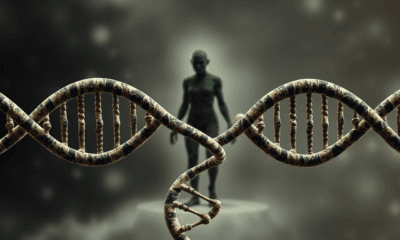While we try to keep things accurate, this content is part of an ongoing experiment and may not always be reliable.
Please double-check important details — we’re not responsible for how the information is used.
Ancient Civilizations
Megalodon’s Versatile Diet: Revisiting the Legend of the “Big Tooth” Shark
Contrary to widespread assumptions, the largest shark that ever lived — Otodus megalodon — fed on marine creatures at various levels of the food pyramid and not just the top. Scientists analyzed the zinc content of a large sample of fossilized megalodon teeth, which had been unearthed above all in Sigmaringen and Passau, and compared them with fossil teeth found elsewhere and the teeth of animals that inhabit our planet today.

Ancient Civilizations
Uncovering Ancient Highs: 4,000-Year-Old Teeth Reveal Earliest Human Psychoactive Plant Use
Scientists have discovered the oldest direct evidence of betel nut chewing in Southeast Asia by analyzing 4,000-year-old dental plaque from a burial in Thailand. This breakthrough method reveals invisible traces of ancient plant use, suggesting psychoactive rituals were part of daily life long before written records.
Ancient Civilizations
“Uncovering 11,000-Year-Old Traditions: Why Ancient Hunters Hauled Wild Boars Across Mountains for a Communal Feast”
Ancient Iranians hosted epic feasts with wild boars that had been hunted and transported from distant regions. These animals weren’t just dinner—they were symbolic gifts. Tooth enamel analysis revealed they came from different areas, suggesting early communities valued geography in gift-giving. The event took place even before agriculture began, hinting at deeply rooted cultural traditions.
Ancient Civilizations
“Uncovering Ancient Culinary Traditions: The Butchery Secrets of Our Prehistoric Ancestors”
Neanderthals living just 70 kilometers apart in Israel may have had different food prep customs, according to new research on butchered animal bones. These subtle variations — like how meat was cut and cooked — hint at cultural traditions passed down through generations. The findings challenge the idea that Neanderthal life was purely practical, suggesting instead a richer, more social layer to their culinary habits.
-

 Detectors8 months ago
Detectors8 months agoA New Horizon for Vision: How Gold Nanoparticles May Restore People’s Sight
-

 Earth & Climate9 months ago
Earth & Climate9 months agoRetiring Abroad Can Be Lonely Business
-

 Cancer9 months ago
Cancer9 months agoRevolutionizing Quantum Communication: Direct Connections Between Multiple Processors
-

 Albert Einstein9 months ago
Albert Einstein9 months agoHarnessing Water Waves: A Breakthrough in Controlling Floating Objects
-

 Earth & Climate8 months ago
Earth & Climate8 months agoHousehold Electricity Three Times More Expensive Than Upcoming ‘Eco-Friendly’ Aviation E-Fuels, Study Reveals
-

 Diseases and Conditions9 months ago
Diseases and Conditions9 months agoReducing Falls Among Elderly Women with Polypharmacy through Exercise Intervention
-

 Chemistry8 months ago
Chemistry8 months ago“Unveiling Hidden Patterns: A New Twist on Interference Phenomena”
-

 Agriculture and Food9 months ago
Agriculture and Food9 months ago“A Sustainable Solution: Researchers Create Hybrid Cheese with 25% Pea Protein”





























